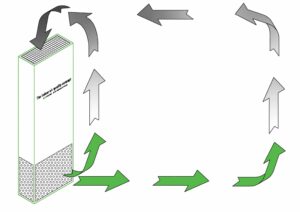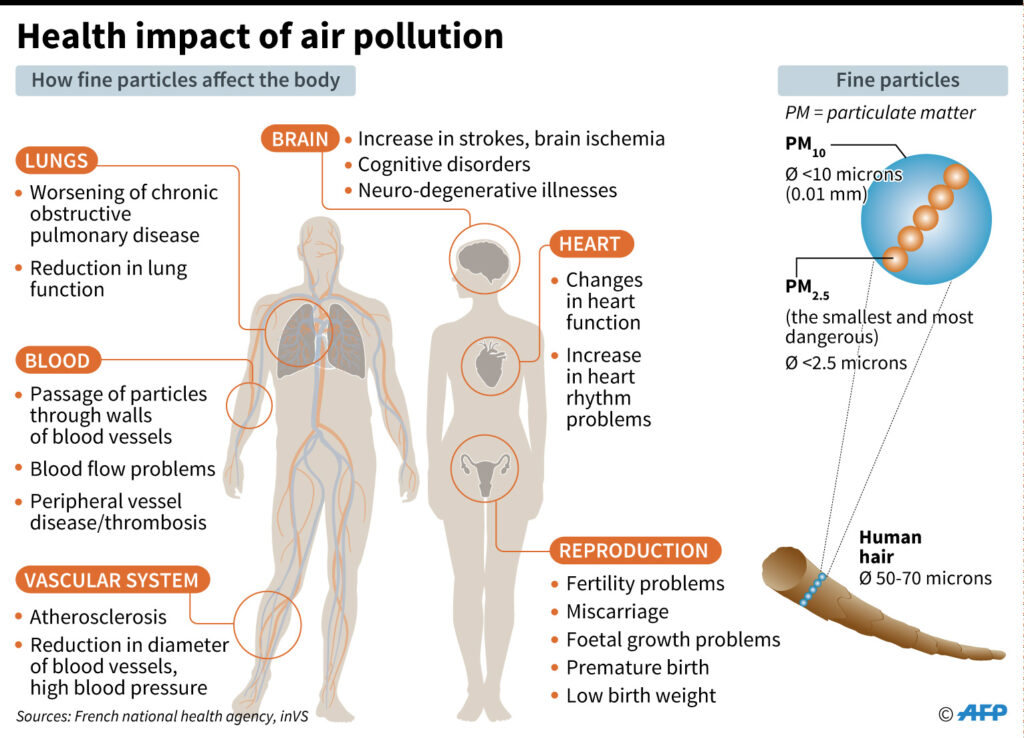We care about clean air
solutions for indoor air quality
Quick to: Product
Fine dust, air quality and absenteeism
Scientists say there are no safe levels of fine dust. Any concentration of it can be bad for humans. Short and long-term exposure to fine dust is associated with, among other things, health problems like lung diseases (asthma, bronchitis, COPD) and cardiovascular diseases. Ultra-fine particles can enter the bloodstream and also have an effect on the nervous system and brain. The WHO’s international agency for cancer research has labeled fine dust as a carcinogen. (source: Volkskrant 22/08/2017)
Fine dust is bad for employees
Fine dust is a serious danger to the health of employees. Poor air quality means that employees are less concentrated on their work and therefore less productive.
We spend about 25% of our time at work and almost 80% of our life indoors. We breathe about 24,000 times a day. The cleaner the air we breathe, the more comfortable we feel. The healthier we live and the better we perform.
According to the WHO (World Health Organization), fine dust causes 7,000,000 deaths per year. According to estimates by the RIVM, poor air quality causes more than 10,000 premature deaths per year in the Netherlands. Scientific studies show that fine dust causes cancer and there is a proven effect on the development of Alzheimer’s.
Fine dust, air quality and absenteeism
Absenteeism in the Netherlands costs us as a society 11.5 billion euros per year. Hay fever alone costs employers 3 billion euros a year.
The numbers don’t lie. Optimising the air quality in the workplace pays off and pays for itself quickly.
If we minimise the presence of pollen, allergens and fine dust particles in the air of the workplace, it not only reduces absenteeism. Employees become more productive, can concentrate better and their sense of well-being increases. Besides, it’s much appreciated if the employer makes a visible effort to optimise working conditions.
Air purifiers to improve air quality
Ventilation systems in buildings claim to block fine dust. However, the filters used in such devices are not as effective as they lead you to believe. Their main purpose is to protect the installations themselves. Fine dust particles smaller than PM10, let alone PM1, or ultra-fine dust PM0.1 are not filtered.
It’s a more sustainable solution to optimise air quality with a recirculation system. Such a device is placed in the office itself and recirculates and filters the air on the work floor. Pollen, allergens, viruses and fine dust in the air are dealt with.
Extreme Air Products has a worldwide patent for recirculation systems that work on the basis of air displacement. We filter even the smallest dust particles from the air almost imperceptibly and we guarantee optimal air quality on the work floor. Read more about air quality here.
The investment often pays for itself within a year. Fewer employees infect each other during the annual recurring flu epidemic. Fewer employees report sick with hay fever complaints. Employees feel less fatigued and more focused. In short, labor productivity increases and absenteeism decreases!
Download our white paper for more information about the air quality in workplaces and what you can do to improve it! Click here for more information about our high end air purifiers.
See some of our previous clients below:










